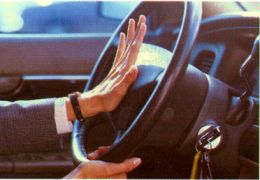G |
rowing pains and growth obviously go hand in hand. Sprawl and traffic congestion are an inescapable part of modern metropolitan life.
Actually it is a barometer of prosperity. The benefits of growth are sometimes lost in the minds and media, especially after a decade of continuous prosperity. When the populous has secure employment and rising incomes more of their attention turns to issues such as traffic, schools, air pollution, water quality – all of which can worsen in a growth area. In the face of a prolonged recession, we would once more yearn for growth
The fact is that some of these issues won’t get any better in the future. Traffic for example will continue to be a problem for the long term. The predications from the census bureau estimates that in the next 20 years the total population of the US will rise by over 48 million people. Considering from 1980 to 1997 we have added more than one car or truck to our “vehicle population” for each new person in our “people population”.
So there’s ample reason to believe that every 5 years we will add more than 12 million addition vehicles to the some odd 215 million we have now. Clearly the influx of vehicles and their traffic will be concentrated in growth metropolitan areas in the south and west.
What is ‘Smart Growth’?
Many citizens in the heart of these growth areas face greater congestion and want to limit future growth. The real job of society is to accommodate growth. Popular jargon calls for “smart growth”. Who wouldn’t be for smart growth, especially versus stupid growth? The term is quite a useless phrase considering that smart growth means very different things to different groups – for one side of the spectrum it means no growth for the other side it means continued unrestrained growth.
Transportation problems will remain a focus for the years to come. Calls for increased spending on public transportation are the norm. But in the US privately owned vehicles will still be the most popular way to travel. Fewer than 4 percent of all work commutes are on public transit; more than 90 percent are in private vehicles.
Even if the number of people taking public transportation were to double, it would have little or no effect on the percentage of people using private vehicles – considering population growth.
Gridlock: No Easy Answers
 The only way to make public transit an effective approach to congestion and pollution control would be to make vehicles less convenient and more costly. Approaches differ the world over. A steep increase in gas prices or licensing fees such as in Europe would be strongly opposed by Americans, and political suicide so that remains unlikely.
The only way to make public transit an effective approach to congestion and pollution control would be to make vehicles less convenient and more costly. Approaches differ the world over. A steep increase in gas prices or licensing fees such as in Europe would be strongly opposed by Americans, and political suicide so that remains unlikely. Even more unlikely is restricting daily driving to odd- and even-numbered license plates (a dismal failure, wealthy drivers had additional cars, one for each day and others simply risked citation en masse). Consider Singapore, where drivers are not allowed into the city center without having a fee based permit.
Undoubtedly rising congestion in some US cities may require such steps, but not in the near future. The short term solution in metro America is building more roads, which never seems to have much effect. Traffic speeds up but then more drivers congregate on the new route until peak traffic is just as bad as before. The paradox is that more roads could increase the number of automobiles.
The bottom line is that congestion is here to stay and is a worldwide problem. Cars are a fast, safe, comfortable, cheap, and flexible way to get from point A to point Z and anywhere in between. So the best way for individuals to deal with the traffic problem is buy a comfortable vehicle and, instead of being upset by the congestion, look at it as a continued sign of our growing prosperity.

